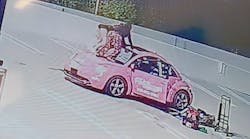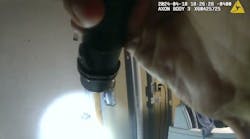A few years back, the United Nations Office on Drugs and Crime published a study on human trafficking, “Global Report on Trafficking in Persons,” and they found:
- Most trafficking is national or regional, carried out by people whose nationality is the same as that of their victims.
- Sexual exploitation is the most commonly identified form of human trafficking.
- Women are the most likely to be trafficked.
Because human trafficking is committed on such a large and expanding scale, law enforcement, science and private industry have joined hands to create programs to help defeat traffickers.
DNA-Prokids, conceived by Dr. Jose Lorente at the University of Grenada, applies a scientific solution to the problem. The idea is simple: reunite families by testing parental DNA against that of children pulled from suspicious circumstances and illegal adoption centers. Lorente partnered in the project with the University of North Texas Center for Human Identification. Since 2007, DNA-Prokids has reunited more than 700 kids with their parents while preventing more than 200 illegal adoptions.
About those adoptions: it is my understanding that most take place in South and Central America and involve children who’ve been abducted and sold to agencies that operate on the dark side of the law. Many of those stolen children end up in the U.S. without the adoptive parents ever realizing the child was ever abducted. Many, many more kids escape detection and join the worldwide tsunami of trafficking victims. But innovative and concerned individuals are finding ways to pitch in and bring their expertise and unique positions to the anti-human trafficking toolbox.
In one notable effort, flight attendants are trained to spot trafficking victims. Trainers work in conjunction with former flight attendant Nancy Rivard, founder of Airline Ambassadors. Volunteer attendants from participating airlines are educated to detect “tells” peculiar to traffickers and victims. They also learn how to deal with suspected traffickers and victims once they spot them.
For safety’s sake, the flight attendant notifies the pilot, who then passes the information along to officials at the flight’s destination. Those officials make certain the flight is met by law enforcement. By keeping things low key, other passengers aren’t endangered and the suspected trafficker isn’t tipped off, thus denying him/her a window in which to further intimidate the victim.
Officials say human trafficking peaks whenever large events take place, with traffickers hoping to profit from forced prostitution involving their victims. Since many of these victims and their traffickers travel by air, flight attendants can offer law enforcement extra eyes and access to a deliberately hard-to-spot demographic.
The more the public is aware of the monstrous crime that is human trafficking, the faster we can put a stop to modern human slavery. DNA-Prokids and Airline Ambassadors have taken steps to be part of the solution. What other industries and sciences could play more active roles?



